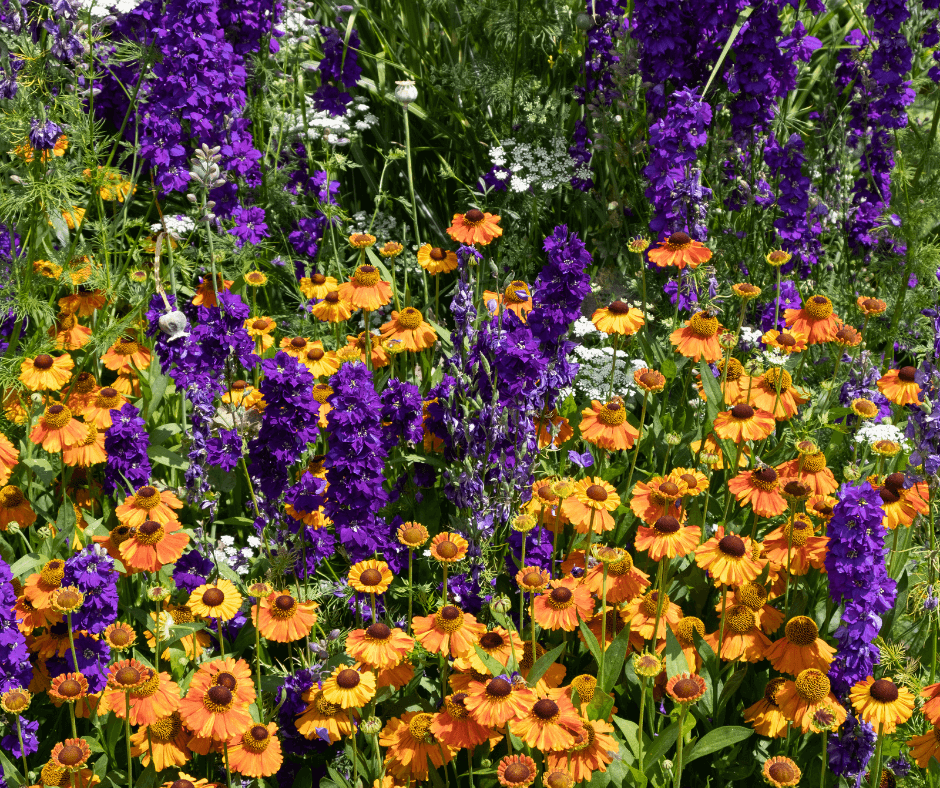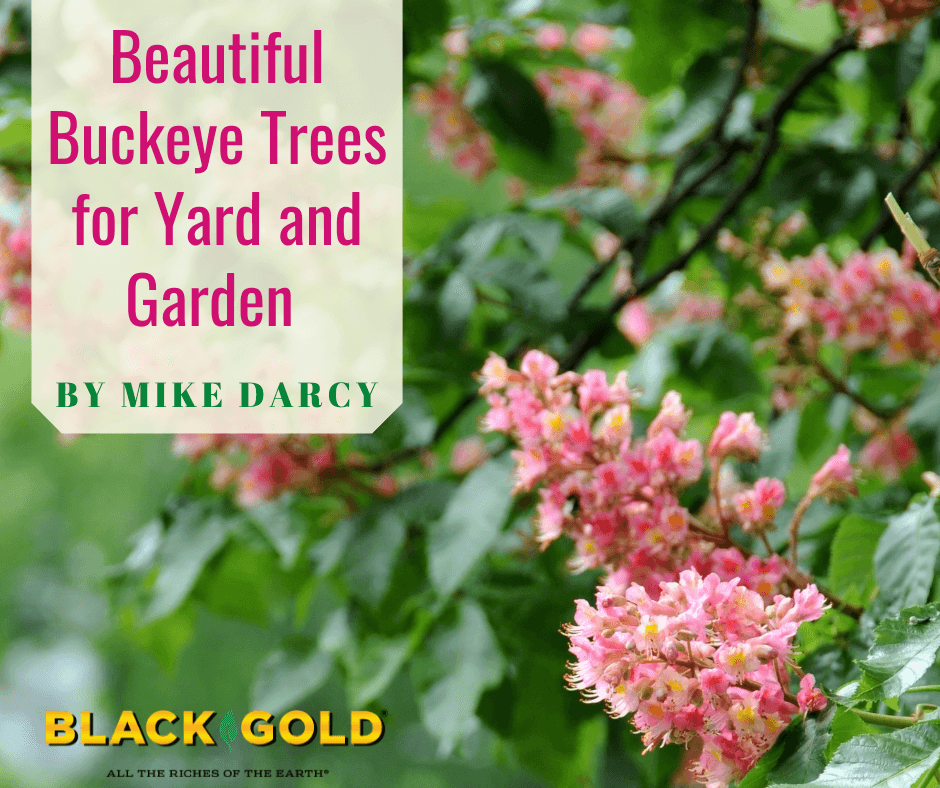
Probably known to many, the state tree of Ohio is the Ohio Buckeye (Aesculus glabra, 20-50 feet, USDA Hardiness Zones 3-7), a large tree native across eastern North America. Another common name is horse chestnut, a name that refers to its round, inedible, husked nuts with a mahogany sheen. In general, Aesculus trees are striking flowering specimens that come in a wide range of sizes and forms. In the Portland, Oregon area, mature specimen trees are most often seen in an arboretum or park setting. I also see them in older gardens with large lots suitable for big trees.
Species are variable, so it is important for homeowners to know about them before choosing a garden variety for the yard. Some are relatively small, while others are large and would overwhelm many garden spaces. When these trees come into flower, they put on a show that is spectacular. The flowers are largely bee-pollinated, but hummingbirds, moths, and even butterflies will also visit them. Exceptions are noted.
Five Beautiful Buckeyes

California buckeye (Aesculus californica, Zones 7-8) is a spring-or-summer-blooming California native favored for low-water gardens. The multi-stemmed tree only grows to 20 by 20 feet and has many large, palm-shaped leaves with multiple leaflets. The glory of this tree is its large spikes of cream-colored, fragrant flowers. They rise from the branches like candles from a candelabra. One important note is that the flowers feed native moths and bees, but non-native honeybees are another story. Apparently, the flowers produce a toxin that negatively impacts the growth and development of honeybees, so refrain from growing it, if you live near beehives.
A tough nature is a good reason to grow this buckeye. It is native to the Sierra Nevada foothills where it grows along dry slopes. In the wild, it naturally drops its leaves in mid- to late-summer to ward off severe late-summer drought. In a garden setting, the leaves will remain until fall with moderate irrigation. The California Buckeye creates an attractive winter silhouette with its silvery trunk and stark branches.

Common horse chestnut (Aesculus hippocastanum, Zones 4-7) and is native to Europe. It is a very large, single-trunked tree that can reach 60 by 40 feet and bears large, ivory flower spikes in late spring that are pollinated by bees. Be aware that not only is its billowing crown massive, but the roots can also be very dense and tend to break up paved surfaces, so don’t plant it near a sidewalk, driveway, or in a typical city lot. The cultivar ‘Baumannii’ has large white flower panicles and does not set seed. This non-invasive variety is the preferred choice for US gardens.
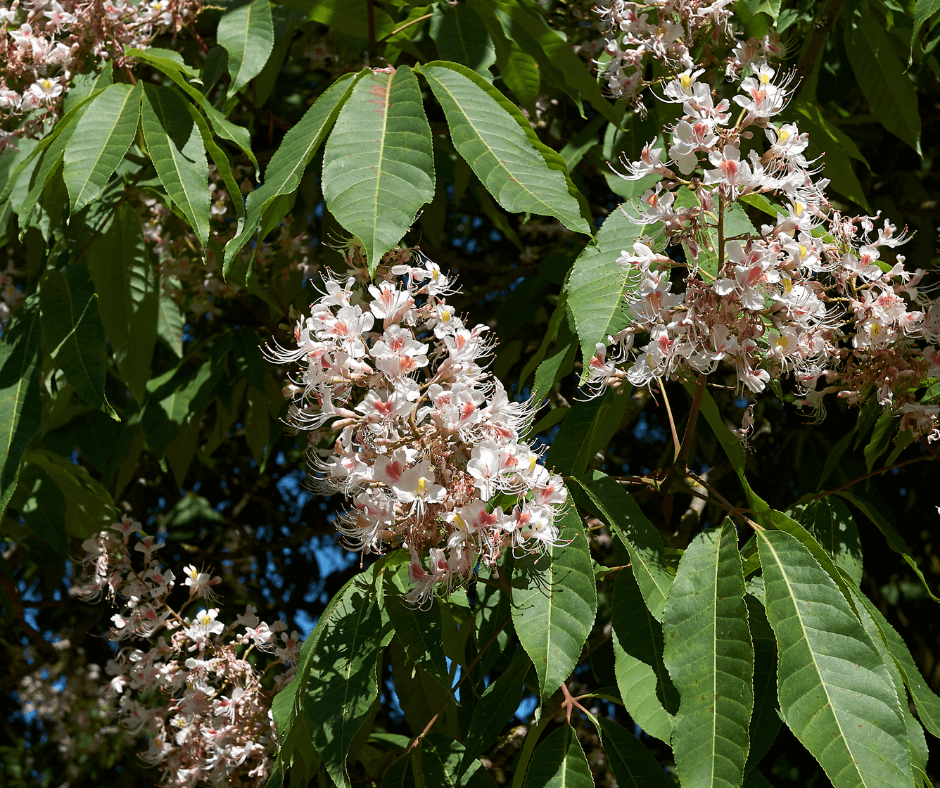
Ohio buckeye (Aesculus glabra, Zones 4-8) is a mid-sized (50-60 feet), single-trunked tree that is widespread across eastern North American. Its spiked clusters of spring flowers may be in shades of pale green, yellow, or ivory with touches of red or pink. Hummingbirds and a wide range of bees pollinate the flowers. The green, palmately compound leaves turn shades of yellow or red in the fall. A variety for reliably red fall color is Early Glow™ Ohio buckeye. It is also disease-resistant and produces little fruit, which reduces fall mess.
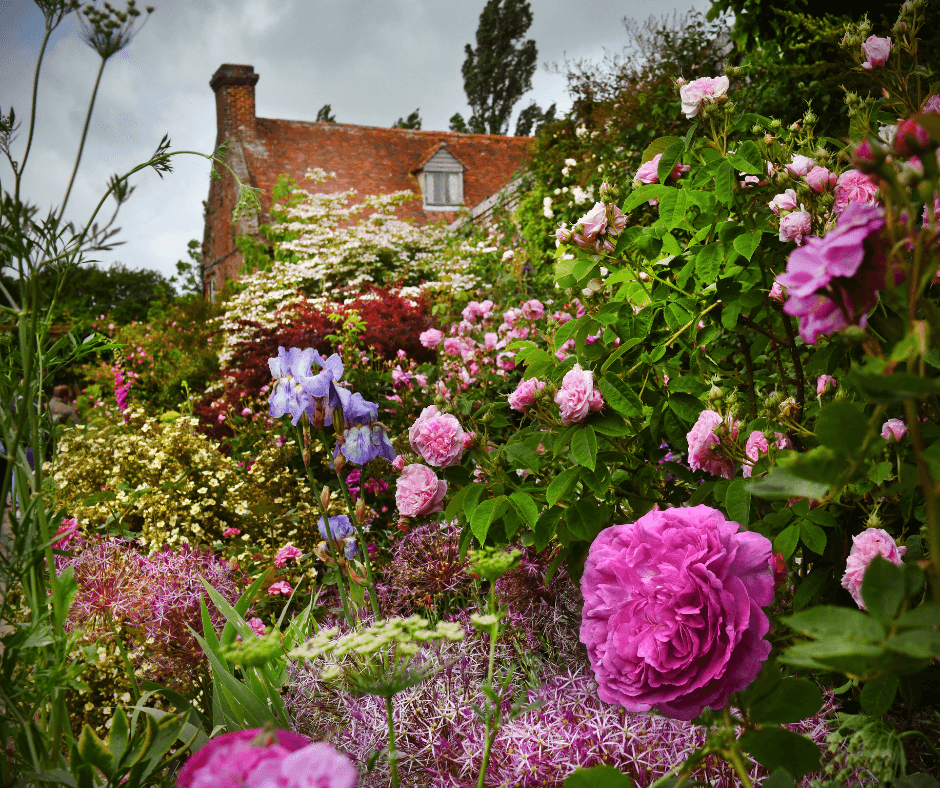
The southeastern native scarlet buckeye (Aesculus pavia, Zones 4-8) is a spectacular, small (12-15 feet), multi-stemmed tree with loose spikes of tubular scarlet flowers adapted for hummingbird pollination. The huge flower spikes look impressive for three weeks or more in spring. Through summer, the tree’s large, green, palmately compound leaves are textural and pretty. When summers are dry, the foliage may drop as early as the first week of September. The stark branches and gray bark of the tree look pleasing through winter.
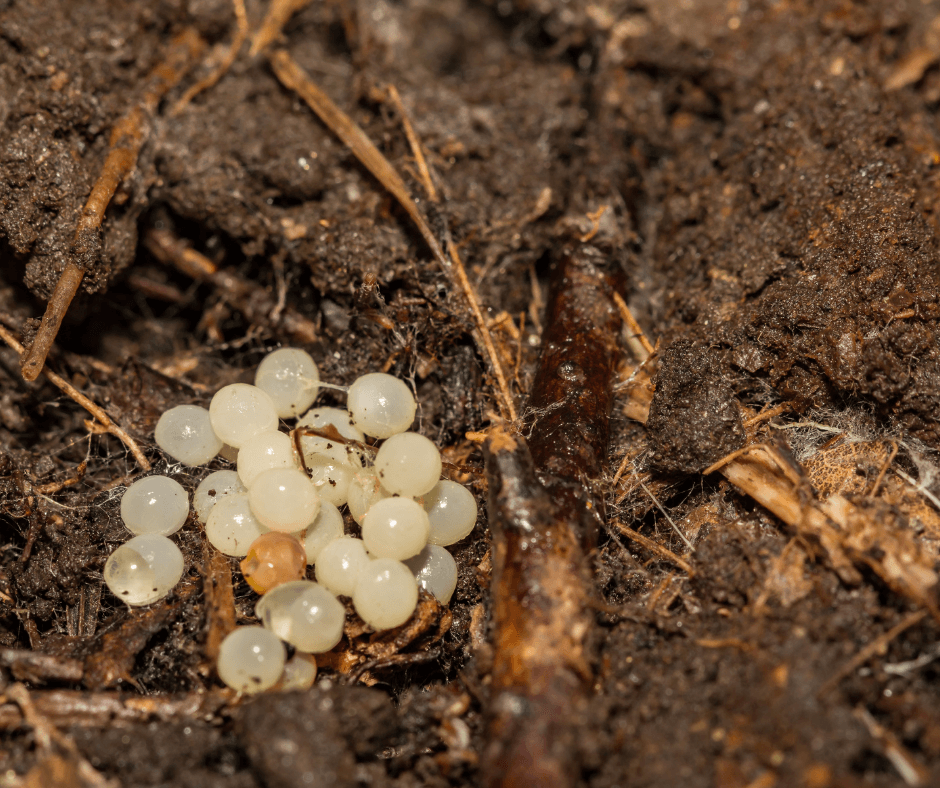
The red horse chestnut (Aesculus x carnea ‘Briotii’, Zones 5-8) is a cross between the European common horse chestnut and the American scarlet buckeye. It is a real show-stopper in full bloom with large, beefy flower spikes of deep pink or red. These appear in early summer and can reach up to 10 inches long. It is a relatively compact tree that should not reach more than 30 or 40 feet at maturity, so homeowners with modest-sized yards can consider growing it. An open lawn will show off its features best. Grow it now only for the flowers and the large leaves but for the winter bark as well.
If there is an arboretum or a large park near you, check out their list of trees to see if Aesculus specimens are listed. That way, you may be fortunate enough to see a couple in full bloom before potentially choosing one for your own yard.
[Click here to learn everything that you need to know about how to plant a new tree.]
